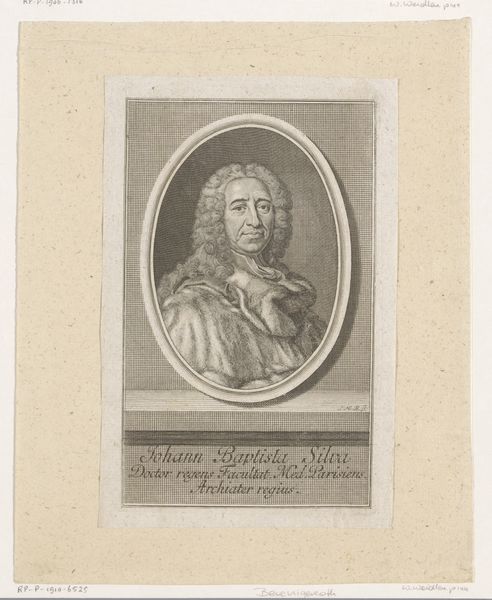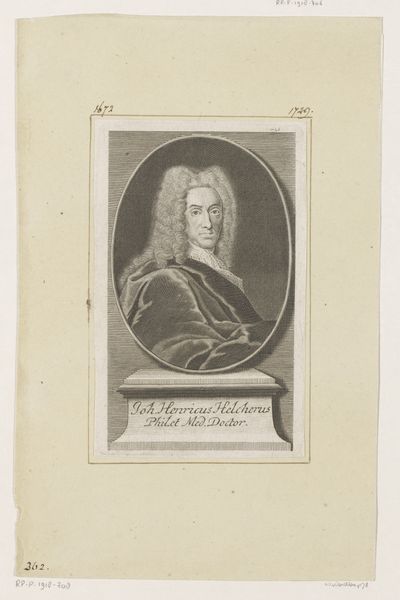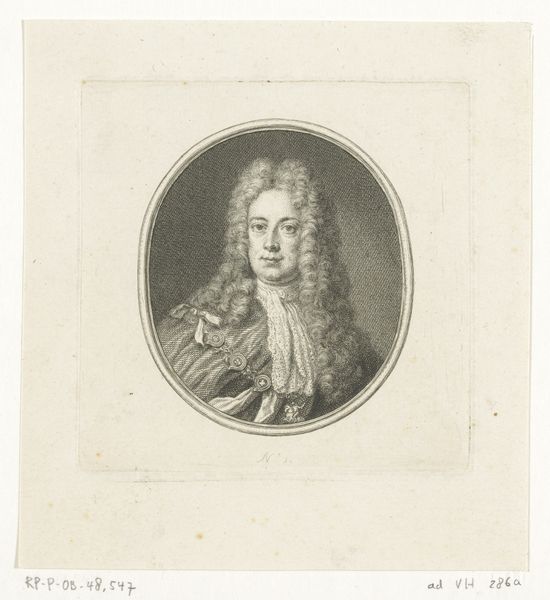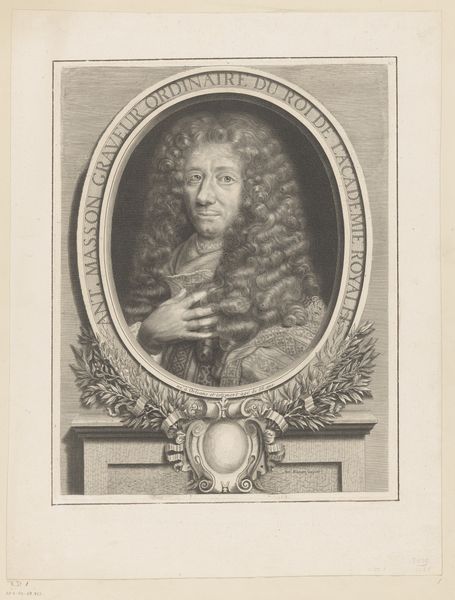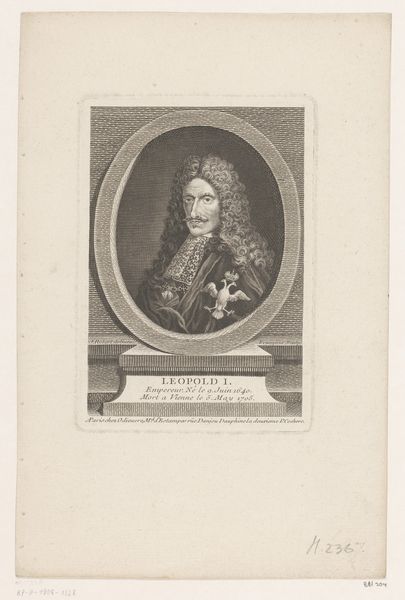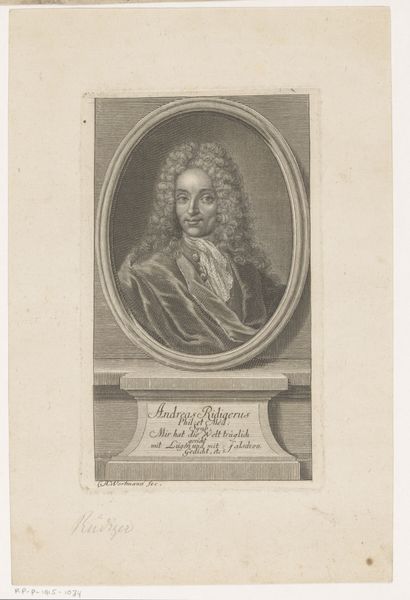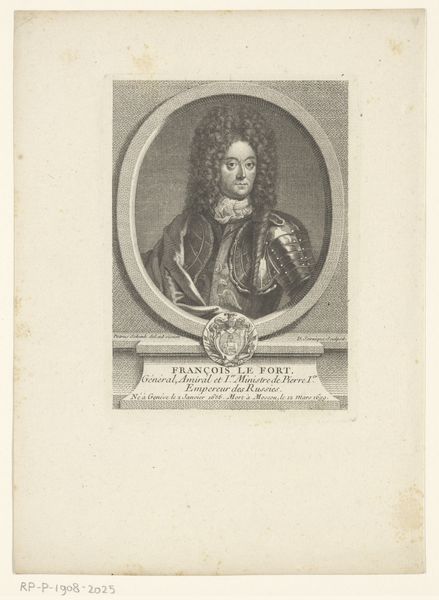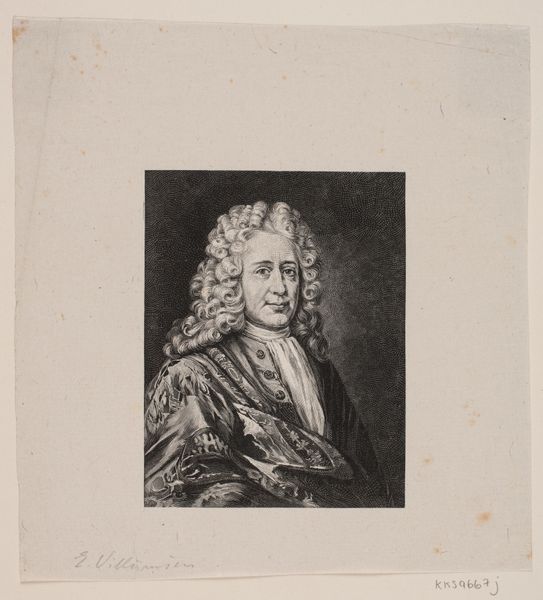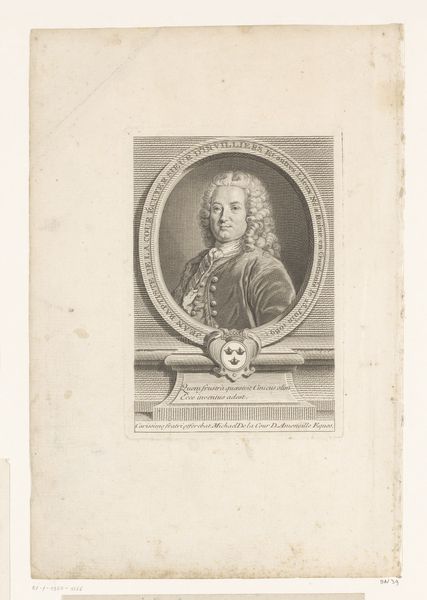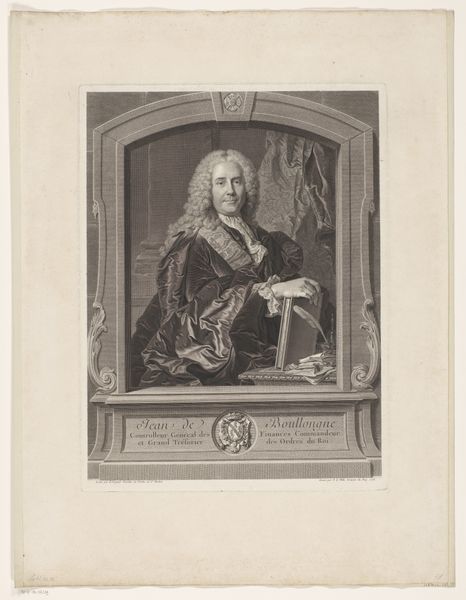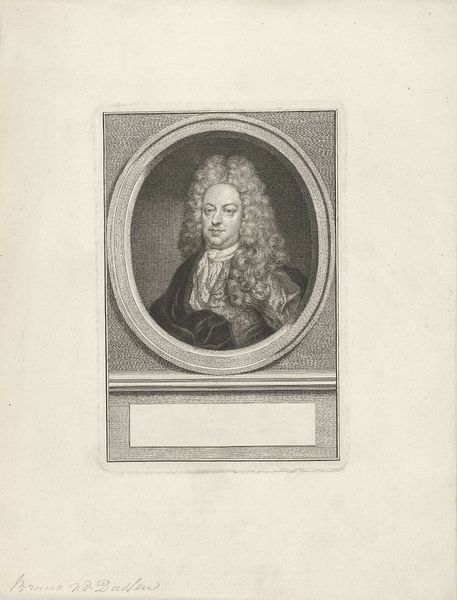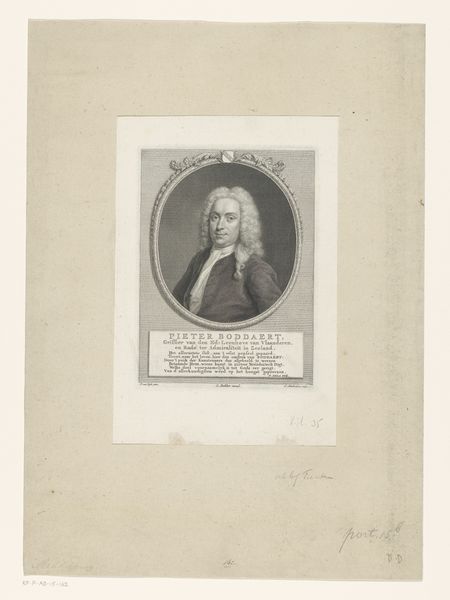
Dimensions: height 213 mm, width 152 mm, height 128 mm, width 87 mm
Copyright: Rijks Museum: Open Domain
Editor: Here we have a portrait of Edmond Halley, an engraving made sometime between 1753 and 1843, housed in the Rijksmuseum. It’s got a very formal feel, partly from that baroque-style frame, but it's rendered in such a way that the textures are prominent. What’s your take on it? Curator: Considering this engraving through a materialist lens, it’s fascinating how it democratizes portraiture. Oil paintings, typically for the wealthy, were exclusive. This engraving, however, made it possible to reproduce and distribute Halley's image widely. Think of the socioeconomic implications: access to knowledge, to representation, was no longer solely the domain of the elite. What kind of labor went into creating the printing plate, do you imagine? Editor: That's an interesting point! I hadn’t thought about the accessibility aspect so much. Given the timeframe, I would guess it involved skilled artisans working meticulously, etching the design onto a metal plate, potentially copper? Curator: Precisely. The labor of these artisans, the availability of materials like copper and ink, and the printing technology of the era were all crucial in determining the final product. It challenges the typical view of art as solely the creation of a singular genius; this was a collaborative process tied to the means of production available at the time. Editor: So, it is about considering art as an object born of very particular material conditions? I guess the baroque frame, with its connotations of opulence, is also interesting when it's rendered in this relatively accessible format. Curator: Exactly. The choice to present Halley within a baroque frame, normally associated with paintings for nobility, raises a further question. Was this perhaps to promote printmaking to an elite class? It hints at a social commentary embedded within the portrait itself. Editor: I hadn't considered that angle. Thanks, that really shifted my perspective on the artwork. Curator: And it’s shifted mine as well! I’m intrigued by how something that seems at first glance purely decorative can speak to a larger history of accessibility and labor.
Comments
No comments
Be the first to comment and join the conversation on the ultimate creative platform.

